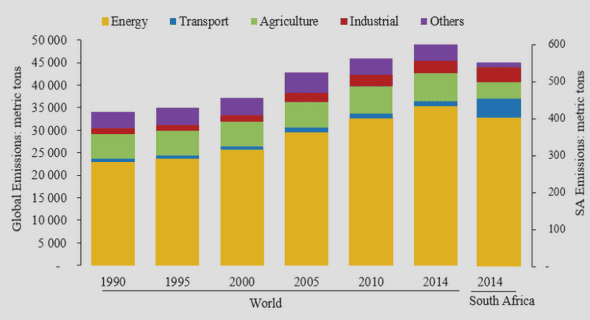(Downloads - 0)
For more info about our services contact : help@bestpfe.com
Table of contents
Introduction
Foreword
1 the interstellar medium
1.1 The life cycle of galactic matter
1.2 Constituents and organization
1.2.1 Constituents
1.2.2 The phases of the ISM
1.2.3 The ISM structure
1.3 Molecules in the ISM
1.3.1 Molecular richness
1.3.2 Observational diagnostics
2 dust and surface chemistry
2.1 Observational evidences
2.1.1 Extinction of light
2.1.2 Scattering
2.1.3 Polarization
2.1.4 Dust emission
2.1.5 Elemental depletions and abundance constraints
2.2 Dust models
2.2.1 The Mathis, Rumpl, and Nordsieck 1977 (MRN) model
2.2.2 The Draine model
2.2.3 The Zubko et al. 2004 models
2.2.4 The Compiègne et al. 2011 model
2.2.5 The Jones et al. 2013 model
2.3 Physical processes
2.3.1 Energy balance
2.3.2 Charge balance
2.4 Surface chemistry
2.4.1 H2 formation
2.4.2 Other reactions and ice formation
2.5 Formation and evolution
2.5.1 Formation processes
2.5.2 Processing and destruction
3 turbulence
3.1 Turbulence
3.1.1 Definition
3.1.2 Kolmogorov theory and scalings
3.1.3 Intermittency
3.1.4 Compressible turbulence and MHD turbulence
3.2 Interstellar turbulence
3.2.1 Observational evidences
3.2.2 Energy sources
3.2.3 Roles
3.3 Turbulent chemistry
3.3.1 CH+, SH+ and H2 in the diffuse ISM
3.3.2 Modeling the interstellar turbulent chemistry
4 stochastic processes
4.1 General definitions
4.1.1 Stochastic processes
4.1.2 The several meanings of “continuous”
4.1.3 Markov processes
4.2 The Chapman-Kolmogorov equation and its differential forms
4.2.1 The Chapman-Kolmogorov equation
4.2.2 General differential form of the Chapman-Kolmogorov equation
4.2.3 The Liouville equation
4.2.4 The Fokker-Planck equation
4.2.5 The Master equation
4.2.6 Important examples
4.3 Stochastic differential equations
4.3.1 Langevin equations and definition problems
4.3.2 It ¯o integral and It ¯o stochastic differential equations
4.3.3 It ¯ o’s lemma for variable changes
4.3.4 Stochastic differential equations and their corresponding Fokker-Planck equations
Dust : temperature fluctuations and surface chemistry
5 a simple dust model
5.1 Dust-radiation interactions
5.1.1 Heat capacity
5.1.2 Radiative processes for a spherical dust grain
5.1.3 External radiation field
5.1.4 Equilibrium temperature
5.1.5 PAHs
5.2 H2 formation on dust grains
5.2.1 Binding sites
5.2.2 Surface processes
5.2.3 Langmuir-Hinshelwood mechanism
5.2.4 Eley-Rideal mechanism
5.3 Dust components and size distribution
5.3.1 A simplistic model
5.3.2 The dust model of the Meudon PDR Code
5.3.3 Comparison with more complete dust models
6 dust temperature fluctuations and dust emissivity
6.1 A Master Equation approach
6.1.1 Master Equation
6.1.2 Properties of the eigenvalues
6.1.3 Resolution method
6.2 Numerical resolution
6.2.1 Discretization of the problem
6.2.2 Numerical tests
6.2.3 Results
6.3 Limit cases
6.3.1 Kramers-Moyal expansion in the big grain limit
6.3.2 Continuous cooling approximation
6.4 Dust emissivity
6.4.1 Computation of the dust emissivity
6.4.2 Comparison with DustEM
6.5 A fast treatment of dust emissivity
6.5.1 Single photon approximation for small grains
6.5.2 A complete emissivity approximation
6.5.3 Implementation in the Meudon PDR Code
7 chemistry on fluctuating dust grains: the case of h2
7.1 A Master Equation approach
7.1.1 General Master Equation
7.1.2 Langmuir-Hinshelwood: general resolution method
7.1.3 Eley-Rideal: a simplified equation
7.2 Numerical resolution
7.2.1 Langmuir-Hinshelwood
7.2.2 Eley-Rideal
7.2.3 Numerical tests
7.3 Approximations of the formation rate
7.3.1 Langmuir-Hinshelwood
7.3.2 Eley-Rideal
7.3.3 Accuracy assessment
8 results : bron et al. 2014
8.1 The article
8.2 Conclusions and perspectives
Turbulence-driven chemistry in the diffuse ism
9 a stochastic model for turbulent chemistry
9.1 Moment approaches and turbulent chemistry
9.1.1 The moment approaches
9.1.2 Strengths and limitations
9.2 A PDF method for turbulence-driven chemistry
9.2.1 The one-point PDF transport equation
9.2.2 Closed and unclosed terms
9.2.3 A stochastic Lagrangian model of turbulent dissipation
9.3 Application to homogeneous turbulence in the interstellar medium
9.3.1 Marginal PDF in the chemical composition-dissipation,space only
9.3.2 Simplification for homogeneous turbulence
9.4 A Lagrangian Monte Carlo method
10 application to the excitation of h2 in the interstellar medium
10.1 Simulation and test of the stochastic diffusion process
10.1.1 Physics and algorithm
10.1.2 Numerical test
10.2 Diffuse atomic ISM: temperature distribution
10.2.1 The model
10.2.2 Net cooling function
10.2.3 Gas heat capacity
10.2.4 Results
10.3 Diffuse molecular gas: H2 excitation
10.3.1 The model
10.3.2 Results
10.4 Conclusions and perspectives
Simulations of the ngc7023 north-west pdr
11 models of the ngc7023 north-west pdr
11.1 The object
11.1.1 Characteristics
11.1.2 Previous works
11.1.3 Constraining the model from the literature
11.2 The observations
11.3 The models
11.3.1 Constant density vs. constant pressures
11.3.2 Best model
11.3.3 Additional aspects
Conclusions and perspectives
Appendix
Bibliography



